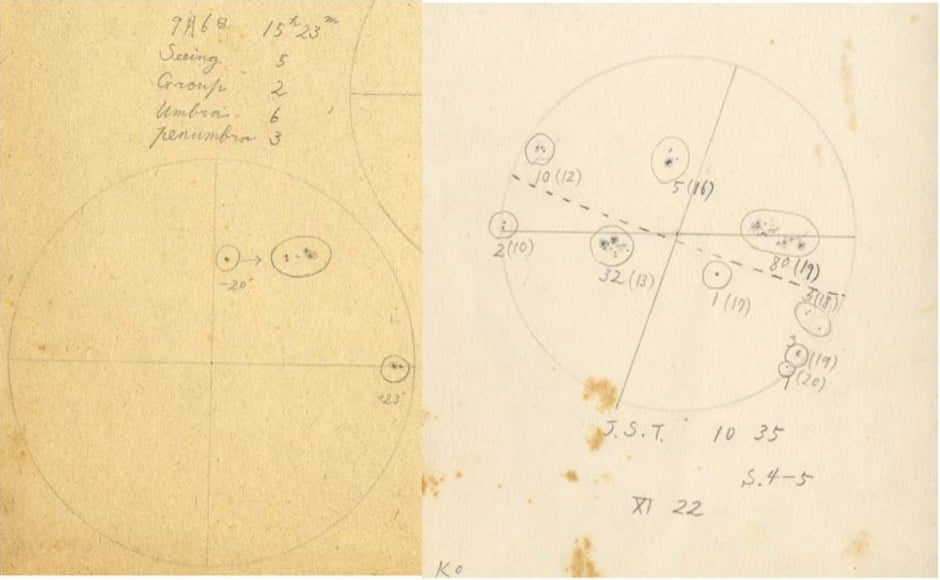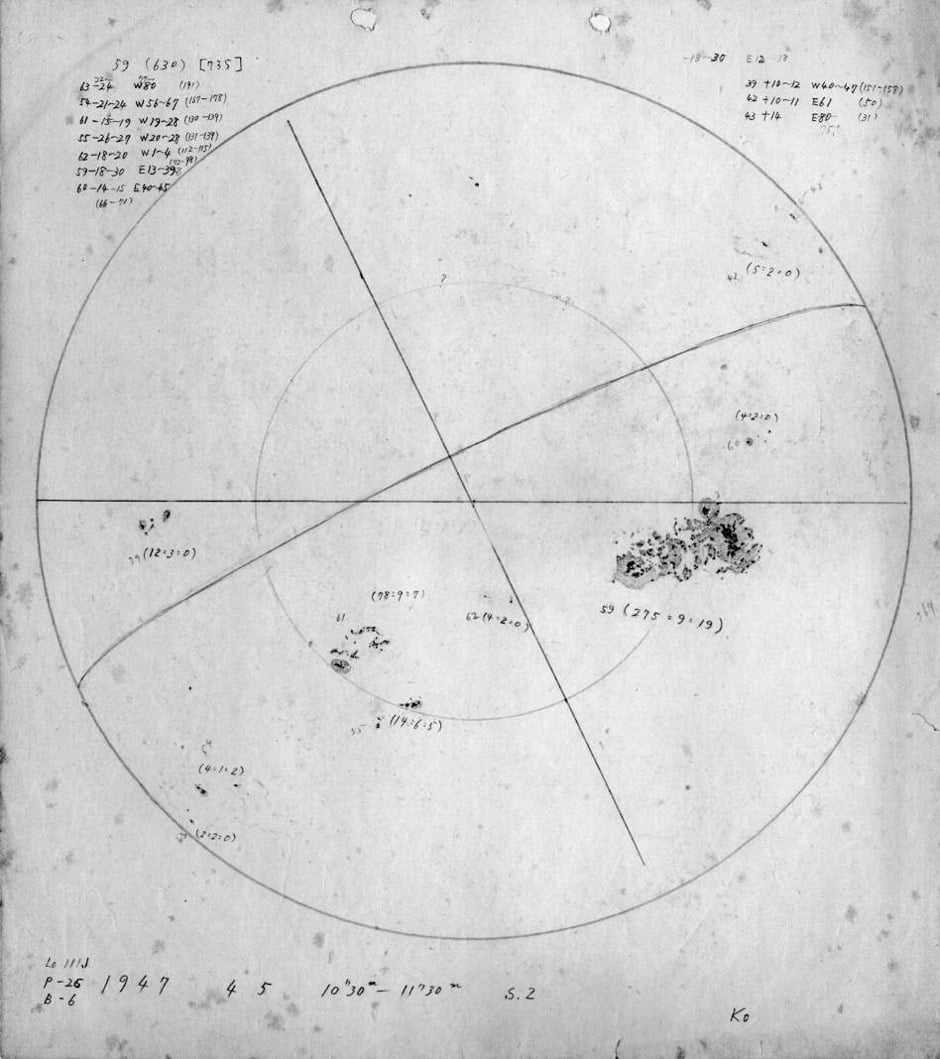Hisako Koyama, the Woman Who Stared at the Sun
In the history of science, there are women who have made significant contributions to their field but haven’t gotten the recognition that their male peers have. The field of astronomy & astrophysics in particular has had many female pioneers — Vera Rubin, Cecilia Payne-Gaposchkin, Annie Jump Cannon, Nancy Grace Roman, Maria Mitchell, Jocelyn Bell Burnell, Henrietta Swan Leavitt, Caroline Herschel, Williamina Fleming, and many others. Add to that list Hisako Koyama, a Japanese astronomer whose detailed sketches of the Sun over a 40-year period laid the foundation for a 400-year timeline of sunspot activity, which has aided researchers in studying solar cycles and magnetic fields.
Ms. Koyama was a most unusual woman of her time. As a scientist, she bridged the amateur and professional world. She preferred “doing” activities: observing, data recording, interacting with the public, and writing. No doubt many Japanese citizens benefited from personal interaction with her. The space and geophysics community continues to benefit from her regular and precise observations of the Sun. Although we know very little of her young personal life other than she was relatively well educated and had a father who supported her desire to view the skies by providing a telescope, we can see from snippets in Japanese amateur astronomy articles that she had a passion for observing, as revealed in her 1981 article: “I simply can’t stop observing when thinking that one can never know when the nature will show us something unusual.”
Here are a few of her sunspot sketches, the top two done using her home telescope and the bottom one using the much larger telescope at the National Museum of Nature and Science (that shows the largest sunspot of the 20th century):


(via the kid should see this)





Stay Connected